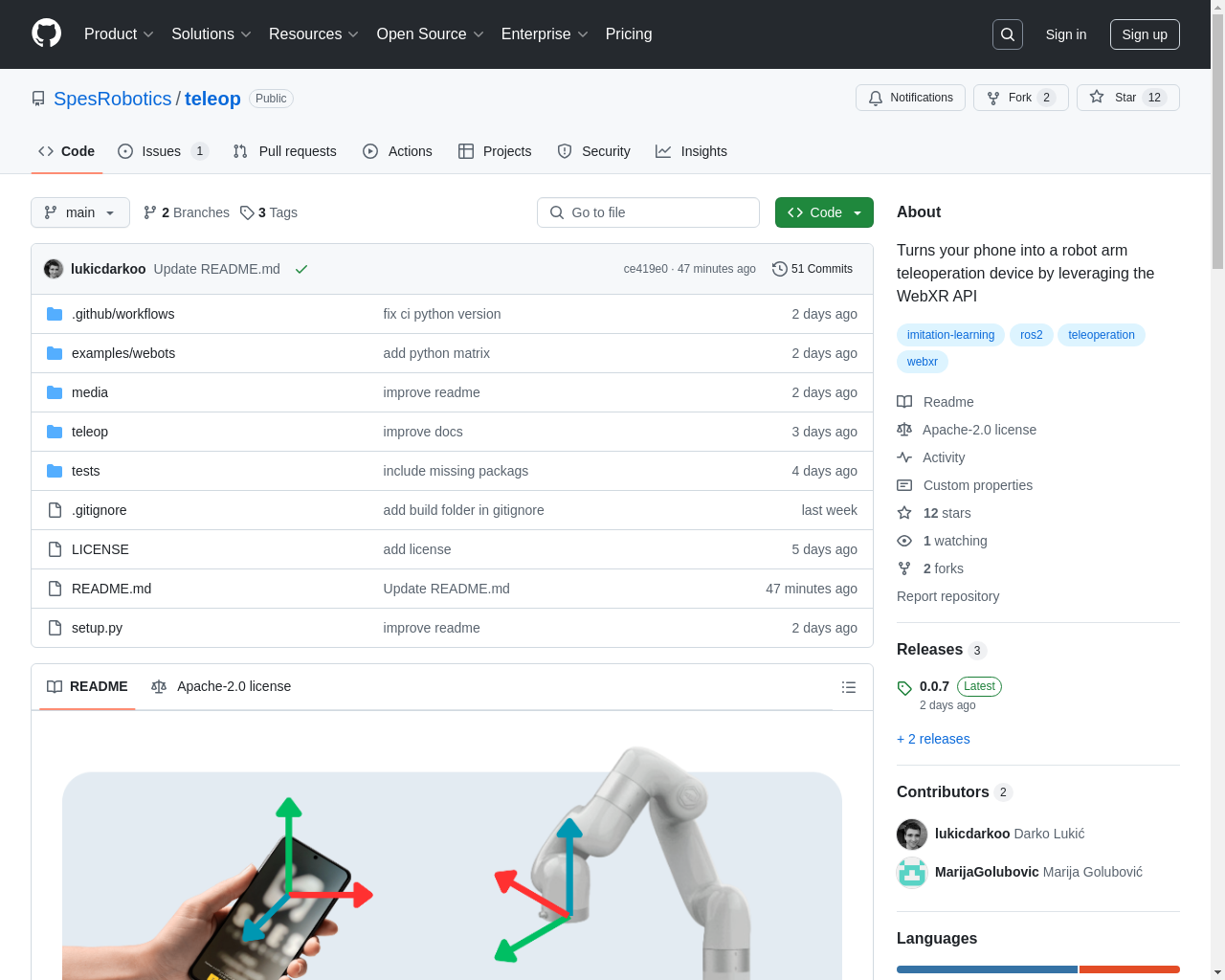

Highlight 1
The app effectively utilizes the smartphone's capabilities for seamless real-time teleoperation of robotic arms.
Highlight 2
The integration with the browser via the WebXR API makes the setup process straightforward and accessible to a wide range of users.
Highlight 3
Turning smartphones into controllers promotes flexibility and convenience for users, eliminating the need for specialized hardware.

Improvement 1
The existing documentation could be improved, providing clearer examples and step-by-step guides for new users.
Improvement 2
The user interface could be enhanced to provide more graphical feedback and controls, improving the overall user experience.
Improvement 3
Expanding compatibility with more types of smartphones and operating systems would broaden the app's usability.
Product Functionality
Consider implementing a calibration tool to help users optimize their smartphone's tracking performance for various robotic setups.
UI & UX
Revamp the UI to be more intuitive, adding tutorials or interactive guides for first-time users to enhance the user experience.
SEO or Marketing
Utilize guides, case studies, and demo videos to improve SEO and attract more users through content marketing.
MultiLanguage Support
Develop multilingual support to cater to non-English speaking users, making the application more accessible internationally.
- 1
How do I set up the Teleop system?
To set up the Teleop system, follow the instructions in the documentation to install the Python package, ensure your smartphone is compatible, and access the application through your browser.
- 2
What types of robots can I control with Teleop?
You can control any robotic arm that can be connected to the computer and is compatible with the commands sent by the Teleop system.
- 3
Do I need any additional hardware to use Teleop?
No additional hardware is required apart from your smartphone and the robot arm you wish to control, though a stable internet connection is necessary for optimal performance.
